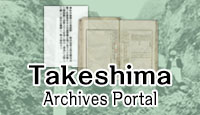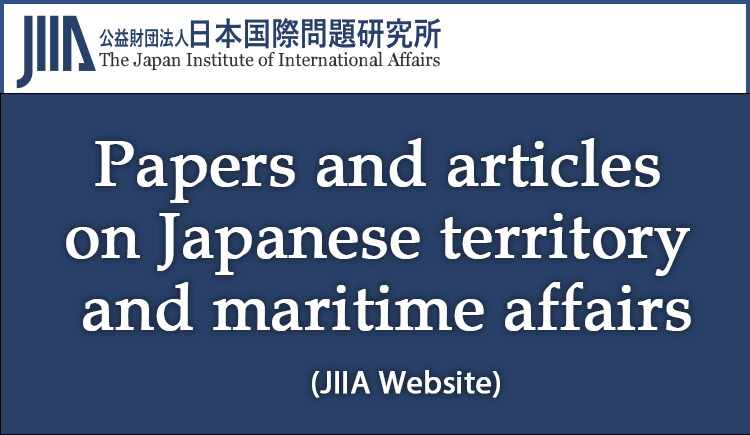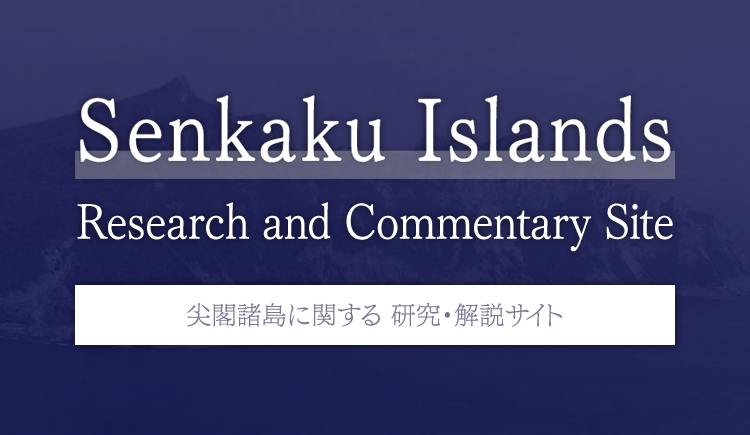The documents and materials published on this website were collected, researched, and prepared with advice from experts, as a part of a Government-commissioned project. The contents of this website do not reflect the views of the Government. Links to external sites (domains other than https://www.cas.go.jp) are not under the management of this site. For linked websites, please check with the organization/group that manages the website for the link in question.
Commentary on themes by historical period
3. Document compiled by the New Zealand Embassy in Japan
On May 3, 1954, under the guard of five patrol vessels, members of Kumi Fishery Cooperative Association on Oki Island sailed out to Takeshima on the Shimane Prefecture fisheries inspection vessel “Shimakaze,” and exercised their fishery rights at the coastal reef zone by gathering seaweed, abalone, turban shell, etc., there. On May 27, the vessel “Shimane-Maru” sailed close to Takeshima, and on May 30 so too did “Daisen,” the research vessel of Tottori Prefecture Fisheries Research Institute. Perhaps in response to these developments, on June 11 of the same year, the ROK government dispatched the South Korean Coast Guard to Takeshima, and on September 2, it decided to station Coast Guard personnel on the island.16 On August 27, the Japanese government issued a protest about the erection of a lighthouse on Takeshima. Also in 1954, on August 23 a Japanese patrol vessel was fired on and on November 21 shells were also fired on patrol vessels. This was also the year in which Japan and the ROK sent each other their respective views on the basis for their territorial sovereignty over Takeshima – the Japanese government sending their views on February 10, with the ROK government doing likewise on September 25. Like the first exchange of views the previous year, the second exchange of views took the form of a rebuttal by the ROK government of the Japanese government’s claims. On September 25, the Japanese government proposed to refer the dispute over Takeshima to the International Court of Justice, a proposal that was rejected by the ROK government on October 28.
Tensions remained high between Japan and the ROK during 1955. Since September 1953 the situation in the East China Sea had worsened, with the ROK repeatedly capturing Japanese fishing vessels. Since July 1954 the ROK government had refused to allow crew members of Japanese fishing vessels captured under the pretext of violating the Syngman Rhee Line to return home after serving their sentences as stipulated by the Fishery Resources Protection Act. The Japanese crew members suffered from poor food and various hardships, enduring detention in the prison camp for foreigners in Busan. The Japanese government sought a negotiated settlement, but on August 17, 1955, the ROK government announced a ban on ROK nationals visiting Japan and a total suspension of trade with Japan. On November 17, the Korean Joint Chiefs of Staff announced a policy of firing on and, if necessary, sinking Japanese fishing vessels. Japanese fishing-related authorities protested this announcement and organized gatherings around the country, calling on the government to take countermeasures.
There is a six-page document titled “Japanes-Korean Relations” in the National Archives of New Zealand (Archives New Zealand (ANZ)), thought to have been compiled by the New Zealand Embassy in Japan, with a hand-written date of October 31, 1955.17 It was most likely made in response to the intensifying confrontation between Japan and the ROK as set out above. The third part of the document, titled “The Takeshima Question,” is duplicated below in its entirety.
Over three years have already passed since the Korean Government began laying claim to the island of Takeshima, which is undeniably Japanese territory. During this period the Japanese Government lodged strong protests with the Korean Government each time it discovered an illegal act committed by the Korean side, such as intrusions into the island. It was also pointed out to them a number of times that Takeshima is clearly Japanese territory from the stand-point of history as well as of international law.
The Korean side sent back a letter of rebuttal, but it did not contain anything that could shake the validity of the Japanese Government’s assertion.
In July of last year the Korean Government were so bold as to take control of Takeshima by force and station a patrol on the island. It constructed a lighthouse and set up telegraph poles. Aside from firing on a Japanese patrol boat which went to make an on-the-spot investigation, the Korean Government also issued a stamp bearing a picture of the island, with the aim of propagandizing Korea’s claim to Takeshima both at home and abroad.
The Japanese Government has never once failed to protest against these illegal and unjust acts, but in order to achieve a peaceful and decisive solution to the dispute, Japan decided to submit the Takeshima question to the International Court of Justice. On September 25, 1954, Japan advanced this proposal to the Korean Government and requested its agreement. The proposal was, however, rejected by the Korean Government on October 28. It is a matter for deep regret that the Korean Government shunned this opportunity to clarify its position before the World Court and to obtain a fair judgement.
Since then the Korean Government has not altered its attitude toward the occupation of Takeshima by force. The Japanese Government will, of course, protest this, but it is its intention to do its utmost for a peaceful settlement of the question.
This text is premised on the legitimacy of Japan’s claims to sovereignty of Takeshima. It also positively evaluates the Japanese government’s policy of seeking a peaceful settlement concerning Takeshima and criticizes the ROK government’s rejection of such a solution. What should be noted above all is that it totally rejects the ROK’s claims about the basis for the ROK’s sovereignty over Takeshima, noting that, “It did not contain anything that could shake the validity of the Japanese Government’s assertion.”
A key issue in the exchange of views between the Japanese and ROK governments was whether there was any evidence that the government on the Korean peninsula had governed Takeshima prior to Shimane Prefecture’s incorporation of Takeshima in 1905. In order to rebut the assertion made in the Japanese government’s first submission of views that Takeshima was Japanese territory when administration of Takeshima began, the ROK government asserted in both their first and second submission of views that the incorporation of Takeshima into Shimane Prefecture in 1905 was an act of aggression.18 As the basis for this view, the ROK government cites (a) the report of the Uldo magistrate Sim Heung-taek of 1906, (b) the fact that Nakai Yozaburo, who petitioned the government of Japan to lease Takeshima to him in 1904, thought that Takeshima was Korean territory, (c) the details contained in the publication by Hibata Sekko, “On Japan-Korea Relations Over Takeshima in the Sea of Japan,” (History and Geography, Vol. 55-6, The Association of Historical Geography in Japan, June 1930), (d) the fact that in Hydrographic Directory of Korean Coastal Waters Vol. 1, published by the Hydrographic Department (January 1933), there is an explanation about Takeshima in the paragraph concerning the “eastern coast of Korea,” and (e) the same document contains records of the activities of the people of Utsuryo Island (Ulleungdo) on Takeshima.
None of these points present any kind of evidence that the government on the Korean peninsula at the time governed Takeshima. In its second submission of views the Japanese government rebutted all of these assertions and in its third submission of views19 in 1956, it rejected the ROK government’s claims in their entirety, noting that, “Inasmuch as the Korean side is unable to produce positive evidences of its effective administration of Takeshima, it appears that the Korean side is trying to assert, by quoting Japanese literatures, that the island was a part of the Korean territory at about the time of its incorporation into Shimane Prefecture. However, such quotations do not serve as direct evidence for establishing Korean ownership of Takeshima, nor are they are valuable even as a evidence, because Korea has interpreted the literatures in such a way as to suit her own convenience and confused the present Takeshima with Ulneungdo.” There is no mistaking that the official at the New Zealand Embassy was also entirely in agreement with Japan after reading the views presented by the ROK government.
It is possible that the reason the New Zealand Embassy official determined that “Takeshima is undeniably Japanese territory” was due to a memo made by the New Zealand Department of External Affairs (NZDEA) and dated December 2, 1953, titled, “Japan-Korea Relations with Special Reference to the Dispute Concerning Takeshima Island.” This memo, which NZDEA sent to the New Zealand Embassy in Japan on December 7, 1953, noted that in July 1951 the ROK government requested the support of the Australian government in calling for revisions to the draft Peace Treaty that would identify Takeshima as ROK territory. However, the same memo also made clear that under the Peace Treaty Takeshima remained Japanese territory, noting that “…the peace treaty was finally signed without amendment of Article 2 (a) in the sense desired by South Korea.”
Note 16
Ministry of Foreign Affairs of the Republic of Korea, ed., Ten Years of Foreign Affairs Administration, (May 1959), p. 513, National Institute of Korean History, ed., Chronology of the History of the Republic of Korea, (October 1984), p. 295, p. 303.
Note 17
Individual Countries - Japan - External Relations - Korea (ANZ, Item Code: R22230074). This document was discovered by the author (Fujii) at Archives New Zealand (ANZ), where he conducted research at the request of the Japan Institute of International Affairs (JIIA). See Fujii, K. “Takeshima mondai ni kansuru nyūjiirando seifu gaimushō no chōsho ni tsuite” [“Records of the Ministry of Foreign Affairs and Trade of New Zealand concerning the Takeshima issue”], (posted on JIIA website July 24, 2023). https://www.jiia.or.jp/jic/20230724-01.html
Note 18
The two views are recorded in the publication edited by the Ministry of Foreign Affairs of the Republic of Korea, Collections of Dokdo-related Materials (I): The Diplomatic Correspondence (1952-76), (July 1977).
Note 19
Recorded in the documents collected by the Ministry of Foreign Affairs (ROK), supra note 18.
Conclusion
The views on the Takeshima issue of three embassies in Japan of the United States, United Kingdom, and New Zealand that have been set out and considered above were all based on the recognition that under the terms of the Peace Treaty, Takeshima remained Japanese territory. Of course, a report from a diplomatic mission overseas to the home country is only a report, and what is written therein may not necessarily constitute the view of the home government. In addition, as Sebald finally noted, “Presumably this is proper subject for negotiation between Japan and Korea without reference SCAP or Allied Powers,” it was generally recognized as not being in any nation’s interest to intervene in the territorial issues of another country, and any recognition of Takeshima as Japanese territory would not necessarily lead to any action to halt the ROK’s illegal occupation of Takeshima.
Even so, it would appear to be the case that Sebald arrived at his recognition on Takeshima from the wording of the Peace Treaty, and that the British and New Zealand embassies arrived at a similar recognition after having considered the various claims of the Japanese and ROK governments. The value of these documents lies in the very fact that they provide an objective judgment on the Takeshima issue from a perspective other than that of Japan or the ROK.
Takeshima
Research and Commentary Site
- I Comprehensive issues
- II Commentary on themes by historical period
- III Analysis of claims by other countries





